Huang Yaguan the Great Wall
Huang Yaguan the Great Wall
The Great Wall of Huangyaguan lies in the mountains 28 kilometers north of Jizhou District. Historically, there were 18 garrison piers and abutments in Jizhou City. Huangyaguan Pass is one of them, and it is also the most important one. Founded in 556 AD, Qi Jiguang, a famous general of the Ming Dynasty, was redesigned and repaired when he was in charge of Jizhen. Huangyaguan Great Wall is an important pass of Jizhen Great Wall in Ming Dynasty and the only one in China.
Basic survey
Huangyaguan Great Wall, built in 556 A.D., is a world cultural heritage and the first batch of 4A-level scenic spots in the country. It is located in the mountains 28 kilometers north of Jizhou District. Huangyaguan Great Wall, which reaches Malan Pass in Zunhua County of Hebei Province in the east, and the General Pass in Pinggu, Beijing in the west, is a part of the ancient Great Wall of China. It has 66 towers, 52 enemy towers and 14 beacon towers. It is a military dangerous place in the east of Beijing. From September 1984 to September 1987, the army and the people worked together to repair a total of 3,025 meters of side walls and 20 enemy and Taiwan units. It is the longest part of the Great Wall restoration project in China. In 1990, Huangyaguan Great Wall was selected as "Ten Sceneries of Jinmen".
Huangyaguancheng is an important pass of Jizhen Great Wall in Ming Dynasty and the only one in the county. The rocks on the east side of Guancheng are mostly yellowish-brown. Whenever the setting sun shines, they are golden and brilliant. It is known as "the Yellow Cliff in the Evening Show", so Guancheng gets its name.
geographical position
The Great Wall of Huangyaguan is centered on Guancheng and extends to the two cliffs of the Guhe River. From the east to Banlagang Mountain, there are cliffs for Pinghuang. From the west to Wangmading Mountain, there are cliffs for leaning. The whole section of the Great Wall is built on the ridge of 736 meters above sea level. This section of the Great Wall is characterized by bricks and stones on the wall, square and round enemy buildings, hollow and solid masonry bricks. Here is the first Great Wall Museum and a contemporary Great Wall stele forest.
Huangyaguan Great Wall has been a masterpiece in the history of Great Wall architecture with its long history, varied layout and ingenious facilities. It has also become a scenic spot such as the Great Wall Museum, "Shuiguan" and "Bagua City" stone inscription forest.
Since 1994, Huangyaguan Great Wall has been named "Patriotic Education Base", "National Defense Education Base" and "Ten Best Places for Youth Cultural Activities and Entertainment" by Tianjin Municipal Committee and Municipal Government.
Historical evolution
The Huangyaguan Great Wall was built in Tianbao, Northern Qi Dynasty, in 556 years.
In the Tang Dynasty, Anlu Mountain stationed its elite army here, the military force. Du Fu wrote in his poem "Yuyang" that "building a mighty city in the north of Lushan Mountain, the old defeat-proof went back to its camp. Excuse me, Yan Qijiu. Why do you need 100,000 soldiers today? The city of Xiongwu in the poem is Huangyaguan. "Fang Yu Ji" contains: "Xiongwu City in the northeast of the state, Tang Tianbao Six Zai (747) Anlu Mountain Building."
In the Ming Dynasty, Qi Jiguang was the general soldier of Jiliao, who had been guarding Jizhou for 16 years. During this period, the Great Wall of Huangyaguan was rebuilt, and the Phoenix Tower, Bagua Street and many other terraces were built.
Huangyakou Pass was built in Yongle in Ming Dynasty, Taiping Village was built in Chenghua (1466). After Longqing and Wanli years, a complete defense engineering system of Zhengguan, Shuikou, Dongxiaocheng and brick piers was built.
Qing Kangxi's Jizhou Chronicle contains: "Ninety-three miles of Huangyaguan border wall, from the east to Barayu, from the west to Pine Roof, forty-five balconies, eight piers and abutments, and three hectares, forty-nine acres and seven cents of grain storage land at the side." There have been countless thrilling wars here.
From 1985 to 1987, two open points of the ancient Great Wall of Jixian County, Huangyaguan and Taipingzhai, were reconstructed. A total of 3 025 meters of walls, 20 balconies, 1 Bagua Guancheng, 1 Zhengguan Building and 1 Zhaibao were reconstructed. They are the longest part of the Great Wall restoration project in China.
From October 1986 to September 1987, the third phase of Huangyaguan Restoration Project was carried out, and the Great Wall Museum of Huangyaguan was constructed, exhibiting ancient weapons, garrison life relics and inscriptions. At the same time, the "Baijiang Ink Stele Forest" and "Baijia Ink Stele Forest" were built.
From April to July 1992, the Customs was restored. In September, Mao Zedong's Poetry and Ink Stele Forest was built.
Architectural features
Guancheng is composed of Zhengguan, Shuiguan, Dongxiaocheng and pier. Zhengguan, namely Guancheng, is the main body of Huangya Guancheng, which is irregular knife handle shape on the West Bank of the Dihe River. The wall is 890 meters in circumference, covering an area of 38,000 square meters. There is a sub-city, a village in the city, and the streets are in the shape of eight diagrams. On the top of the South Gate is a plaque of Han Baiyu inscribed in the regular script "Huangyaguan". There is a structural building in the south, with the plaque "Jibei Xiongguan" on the yang side and "Jintang Consolidation" on the negative side. The north wall extends eastward, i.e. Shuiguan. Shuiguan is a bridge-cave building with pheasants on top and arch-shaped water tunnels on the bottom. It is the only water gate in the Great Wall. In 1996, the remaining Guancheng was destroyed again, leaving only the pebbles of the North Wall. Now Huangyaguan has become a tourist attraction with hundreds of thousands of Chinese and foreign tourists every year.
It's 30 kilometers north of Jizhou District. Half Lacaning Mountain in the East and Wang Maoding Mountain in the West have a total length of 3025 meters. Guancheng is an important place for government and warehouse. It faces the Guhe River in the east. A five-hole bridge-type water gate is built between the valleys. On the west side of the Great Wall, brick walls, stone walls, dangerous gables and split Gables are built according to local conditions. Along the line, there are many types of enemy buildings and smoke piers, including square, round, brick and stone, totaling 20. Among them, the Phoenix Tower on the Gufeng Peak, one kilometer north of Xiongqiguan, is a brick circular building with a base diameter of 16.1 meters and a height of 18.3 meters. It has two floors, the upper and the lower. It is rare in other places to build a brick building on top. Due to the disrepair of old age and the destruction of the "Cultural Revolution", the walls are in decadence. From 1984 to 1987, the Tianjin Municipal People's Government and people from all walks of life raised funds to repair, build Panshan Highway, build Great Wall Museum, Great Wall Stele Forest and Resort.
The Great Wall Department and Warehouse. To the East is the Jihe River and to the west is the King's Maudingshan. With the mountain terrain construction, irregular knife handle shape, from east to west by Wengcheng, outer city and inner city three parts. In the east, West and south of the city wall, there are thoroughfare gates and towers. In the North wall, there are no gates because of defensive needs, but the Arctic Pavilion is built on the city platform. The ground elevation difference between the inner and outer cities is 4 meters. There is an eye gate at the South and North ends to connect the inner and outer cities. The streets in the city do not have a chessboard layout. They are composed of dozens of dead lanes, roadways and dislocations of Dingtou. They are called "Eight Diagrams Street". Walking in the meantime, gives people a sense of confusion, full of mystery. In 1987, it was restored with the graphics and azimuth distribution of Qian, Gen, earthquake, Sui, Li, Kun and Yi. The Huangyakou Promotion and Transfer Office in the center of the city was established as the Great Wall Museum. The Qiangua District has created a hundred generals, a hundred ink stele forests and Mao Zedong's poetry and ink stele forests. The bamboo carving hall was built in Wengcheng, and the rest of the houses were turned into Huangya Mountain Villa Hotel, which is a scenic resort of the Great Wall with complete tourist facilities in China.
Main attractions
Huangyaguan Great Wall has 20 balconies, 1 Bagua Guancheng, 1 Zhengguan Building and 1 Zhaibao. Huangyaguancheng has distinct architectural features and constitutes a complete defensive fortification system. Including the city wall and four gate towers in northeast, southwest and north. "Huangyakou Pass" is inscribed on Nancheng Gate, Huangyazhengguan is inscribed on Beicheng Gate, and "Arctic Pavilion" is built on the wall, also known as "Xuanwu Temple". The streets in Guancheng are known as "Eight Diagrams Street", also known as "Eight Diagrams Enchantment". They are composed of dead lanes and live lanes, which are easy to come out of. Outside Guancheng, there is a round hollow enemy building, the famous Phoenix Tower. From then on, to the south is the Huangya Pass across the Liuhe River; to the west is the Alpine Tourist Area of the Great Wall with the side wall of the Great Wall and the beacon on the top of Wang Mao Mountain as its main content; to the East is the Great Wall Tourist Area of Taipingzhai, where there is a noticeable square enemy building called "Widow Tower". There is also a black round stone building on the top of the mountain, which is the Duntai of Beiqi built during the Tianbao period of the Northern Qi Dynasty.
Huangyaguan Great Wall Tourist Area includes three spectacles, namely "Huangyaxia Xizhao", "Erlong Xizhu" and "Yunhai Yanbo". It has four characteristics: strong, dangerous, beautiful and ancient. The restored Huangyaguan Great Wall restored her primitive and magnificent appearance, and on this basis, a number of cultural landscapes were built. The first Great Wall Museum in China was built on the basis of the Central Governor's Office of Bagua Street. A large-scale stele forest of the Great Wall at Huangyaguan was built in the street, including Bai generals, Baijia stele forest, Mao Zedong's poetry and ink stele forest, seal stele forest, Baisongyuan and bamboo carved joint hall. Qi Jiguang stone statues were also erected on the stone platform of the inner square of the Great Wall in Taipingzhai. A water playground of Baxian Lake has also been built on the Baxian Lake east of Huangyaguan Pass. The main attractions are:
Huang Ya Zheng Guan
Also known as the Little Yanmen Pass. Built in the Ming Dynasty, it is a famous pass along the Great Wall and the only one in Jixian County. Widow building to the east, Wang Maoding Mountain to the west, wall length 2152 meters. Including the wall of Wengchengguan City, four gate towers in east, west, north and south, as well as the corner tower, gate, gate, Shuiguan, archway, Bagua Street, pit, transfer office and the Phoenix Tower outside the city. Above the Nehe River, there are also water gates connected, which are five-hole bridges with stacks and perforations, and iron fences under them, so that water can flow and people and horses can not cross. Huangyazhengguan on the west side of Shuiguan is built on top of the building "Arctic Pavilion", commonly known as Guandi Temple.
Taipingzhai and Dianjiantai
Taiping Village is located in Xiaoping Village, one kilometer southeast of Huangyaguan. The altitude ranges from 400 to 500 meters. The total length is 873 meters. Taipingzhai controls the Chongshan Valley on the east side of Huangyaguan City. Zhaibeigudao is called Tazigou. During the Ming and Jiajing Dynasties, Tatar broke through the city and entered the Customs, hence its name. On the east side of the Great Wall of Taipingzhai, a new entrance-type sidewalk is built, and the stone forehead of the "Taipingzhai" is embedded on the door. Taipingzhai has six enemy buildings, one pier and one accessible gate. There is a small urn city in front of the sidewalk. On the square in front of the urn city, there is a granite statue of Qi Jiguang, a famous garrison builder in late Ming Dynasty and chief soldier of Jizhou, who is 8.5 meters high. To the west of Wengcheng, there is a section of city wall extending more than 30 meters outward. An enemy station is set up, which is called a sentry building.
Widow building
Baishi Widow Building is a square building, which is located in the west section of the Great Wall of Taipingzhai. Legend has it that Qi Jiguang conscripted Henan soldiers to repair the Great Wall terrace during the Ming Dynasty. At times, twelve women consort to find their husbands and donate money to build the enemy building. Later generations have been called "widow building". It is 13 meters high and has two floors. The outer wall of the lower floor is connected with the city wall. Four large brick columns divide the building into four vaulted halls. The upper floor is a rectangular hut with dragon heads at both ends of the roof and four corners crouching with pottery lin, Phoenix and lion. The room can accommodate more than 10 people.
Wang hat Ding Shan
Wang Maoding Mountain is like a laurel crown on the head of Wang Ye in the feudal society. Its peaks are strange and dense, and its cliffs are steep and rocky.
Bagua City
The Eight Diagrams City under Huangyaguan was built in the Ming Dynasty with a circumference of 707 meters and nine gates. According to the hexagrams of "Qian, Kan, Gen, Earthquake, Su, Li, Kun and Dui", the Eight Diagrams City under Huangyaguan was organized into a network of streets with more than 40 streets and only one or two gates connected. This is the Eight Diagrams Phantom. There are the Great Wall Museum, the Great Wall Stele Forest and the Great Wall Resort.
The Great Wall stele
Located in Bagua City, it is a imitation of Qing Dynasty building with spacious courtyard. In front of the gallery and in the middle of the gallery, there are two granite carvings, engraved with the inscriptions of Mao Zedong's "Not a Hero Without the Great Wall" and Deng Xiaoping's "Love China, Build My Great Wall". The Great Wall Stele Forest is the largest stele forest in northern China, including Mao Zedong's poetry and ink stele forest, Baijiang's ink stele forest and Baijia's ink stele forest.
Huang Ya Shui Guan
Huangya Shuiguan is the famous Shuikou Pass of the Beijing East Great Wall. Controlling the valley, connecting Taiping Village in the East and Huangyaguan City in the west. Yongle Year of Ming Dynasty (1403-1424) was built. In 1992, the wall was restored to its original site because of its disrepair. A five-hole water tunnel was built on the upper part of the road. It is 75.5 meters long and 12.5 meters high. By the side of Jinwei Highway Gap Bridge, to Tongguan City northeast corner building. Ming Dynasty Shuiguan, pheasant battlements with iron guns and copper, five-hole water tunnel barrier gates, war against enemy soldiers, peacetime customs collection.
Museum
The first Great Wall Museum in China is the Huangyaguan Great Wall Museum in Tianjin, which is close to the ancient Great Wall in Jizhou District of Tianjin. The ancient Great Wall is situated at Huangyaguan, 30 kilometers north of Jizhou District. The city wall is 41 kilometers long. It was built in Tianbao, Northern Qi Dynasty (577 A.D.). During the Longqing period of Ming Dynasty, Qi Jiguang, the national hero, served as the general soldier of Jizhen. In order to strengthen the northern border defense, the original Great Wall was redesigned and overhauled. The Great Wall, restored in 1984, begins in the East with half Lavatang Mountain and ends in the West with Wangmading Mountain, winding 3025 meters. There are stone walls in Beiqi Dynasty and brick walls in Ming Dynasty. The enemy buildings are round and square, with masonry and brick barriers, hollow and solid, with sentinel towers separated from the walls, and piers and abutments independently located in the walls. Outside Huangyaguan, about a kilometer away, there is a circular enemy building, Phoenix Tower, which is 23 meters high and 16 meters in diameter. It was built by the old method of "bricks and stones in Gou yi". There are Bagua Village in Huangya, artificial lakes north of the Great Wall, boating and fishing, camping activities and so on. In the south of Huangyaguan, Tianjin "Huangyaguan Great Wall Museum" is built, which is the first museum in China to study the history of the Great Wall. The museum displays historical materials of the ancient Great Wall of China and Jizhou District, as well as cultural relics such as battle knives, weapons and daily necessities used by Qi Jiguang at that time.
Relevant information
Huangyaguan Great Wall Ticket Price: Adult Ticket 70 yuan per person (including insurance), Student ID 40 yuan per person (including insurance), 60-69 years old person 40 yuan per person (including insurance), (Children under 1.2 meters, over 70 years old with ID card or old card, Active servicemen with military ID, military disability, disabled, free)
Scenic spot level:
AAAA
Driving route: Jinji high-speed exit, driving to the North Outer Ring, see the fire brigade turn left, through the railway to Huangyaguan.
If it's Beijing, the nearest route: Beijing - Pinggu - Jinhai Lake - Wangzhuang Bridge turns left and goes straight to Huangyaguan.
Bus route:
Train: Tianjin - Jizhou District (Tianjin East Railway Station early departure 7:28 to Jizhou District Railway Station).
Automobile: Tianjin Hebei Passenger Station - Tianjin Jizhou Passenger Station, Jizhou District to Huangyaguan Great Wall can transfer to minibus.



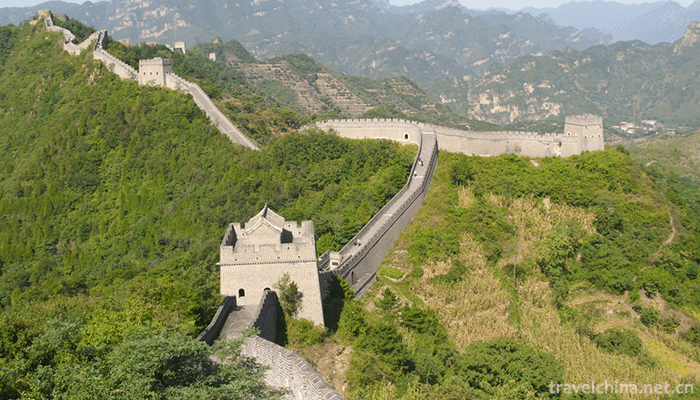
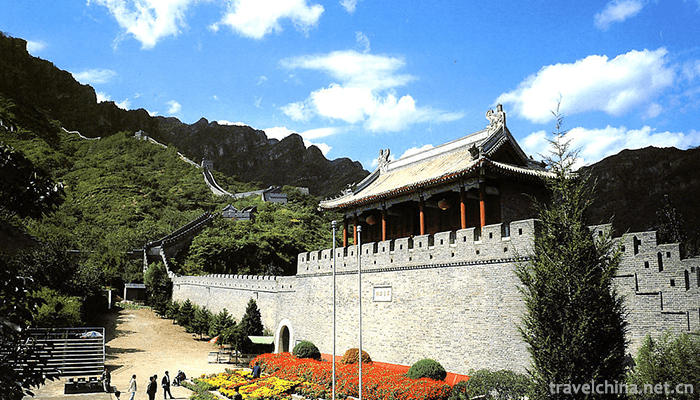
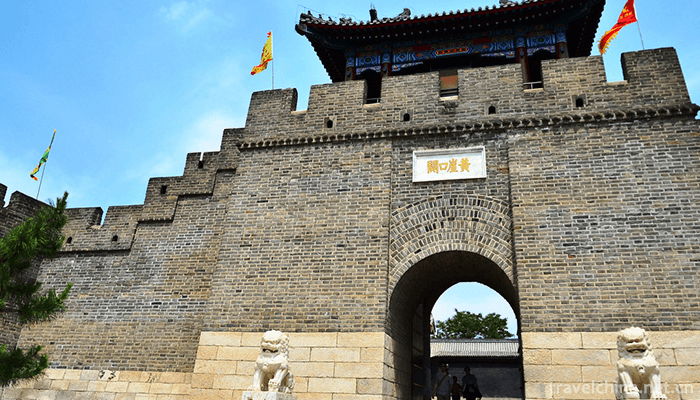
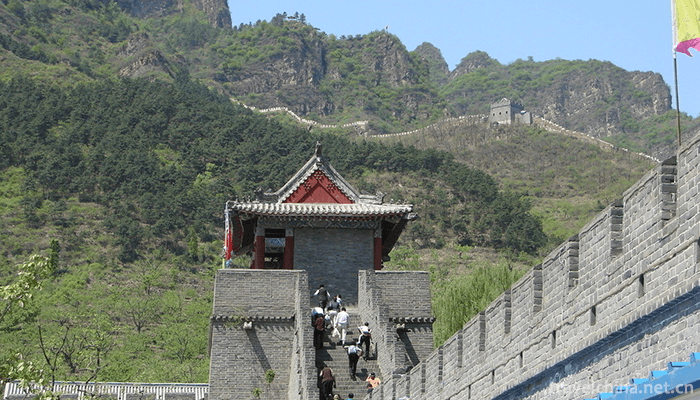
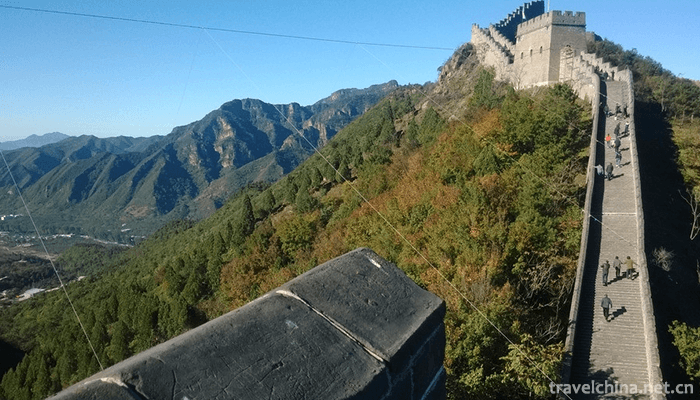
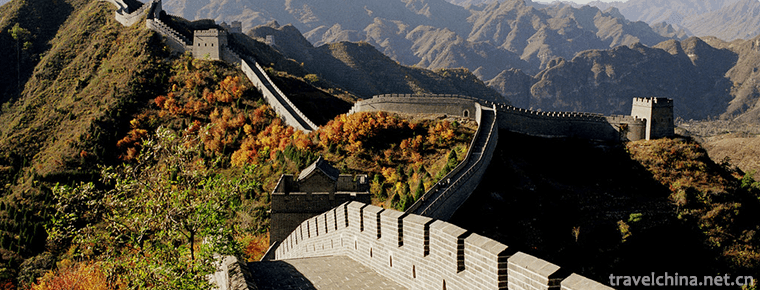
-
1.Shika Snow Mountain
Sheka snow mountain scenic area is located in the southwest of Jian Tang town in Shangri-La County
Time 2018-10-19 -
2.Zhongshan Park
Zhongshan Park is located in the south of the Forbidden City (Palace Museum) in the center of Beijing, west of Tian'anmen, and separated from the Palace Museum.
Time 2018-12-22 -
3.Kizil Gaha Peak Sui
Located on the east side of Saltwater Valley in the northwest of Kuqa County Town, Kizil Mahabi is a towering ancient military building with the meaning of "old red mouth" or "red sentr
Time 2018-12-23 -
4.Liang Ping Wood New Year Print
Liangping Wood Printing New Year Painting belongs to Liangping's "Three Wonders" (Bamboo Curtain, New Year Painting and Lantern Opera), which is a kind of painting art drawn by the people in
Time 2019-05-13 -
5.Chak Chak
"Chuck Chuck" is a highly interactive dialogue between two or more people. According to the different content and language characteristics, it can be roughly divided into five types:
Time 2019-06-10 -
6.Guozhuo Dance in Shannanchang
Shannanchang Guozhuo Dance is a kind of waist drum, which originated in Dabu (now Jiacha) area. Legend has it that in the mid-eighth century, with the help of Buddhist masters such as lotus and peanut
Time 2019-06-13 -
7.Yao an Bazi Cavity
On June 7, 2008, Yao'an Baziqiang, declared by Yao'an County, Yunnan Province, was listed in the second batch of national intangible cultural heritage list with the approval of the State Council. Heri
Time 2019-07-11 -
8.Yongxin Drum
Yongxin Xiaogu is one of the traditional operas in Ji'an City, Jiangxi Province, which originated from Taoism. Legend has it that it was formed in Yongxin, Jiangxi Province during the reign of Qingdao
Time 2019-07-14 -
9.Custom of mud fish
The custom of filling mud fish is a local traditional handicraft with a long history in Guangdong Province. It combines traditional handicraft weaving and fishing skills. However, even in Doumen, the
Time 2019-08-10 -
10.Beijing Institute Of Petrochemical Technology
Beijing Petrochemical College was founded in 1978. It was developed from the Second Branch of Beijing Chemical College and Beijing Petrochemical College. It became more famous in 1992 and was transfer
Time 2019-09-06 -
11.Guiyuanlin Zhangba Luzhou
Longan forest in Zhangba, Luzhou is a genetic Bank of Longan Germplasm in inland China. As the most concentrated longan plantation with a history of more than 100 years, it is as valuable as giant panda in zoology.
Time 2020-10-16 -
12.Climate of Yibin
Yibin City has a humid monsoon climate in the middle subtropics, and the low hills and river valleys have the climate attributes of south subtropics. It has the characteristics of mild climate, abundant heat, abundant rainfall, suitable illumination, long fr
Time 2020-12-18